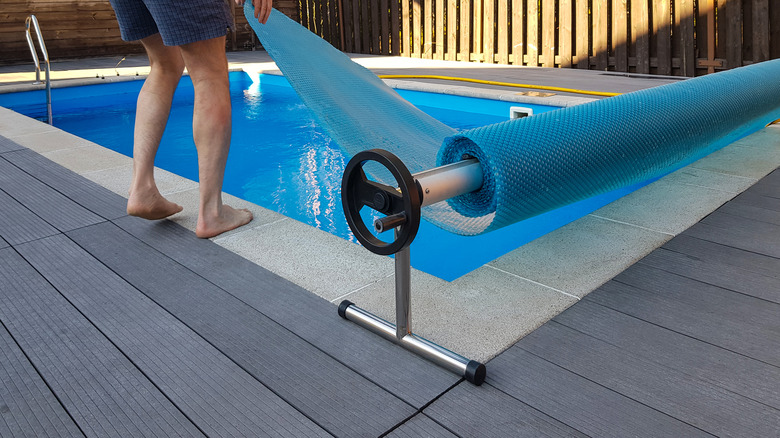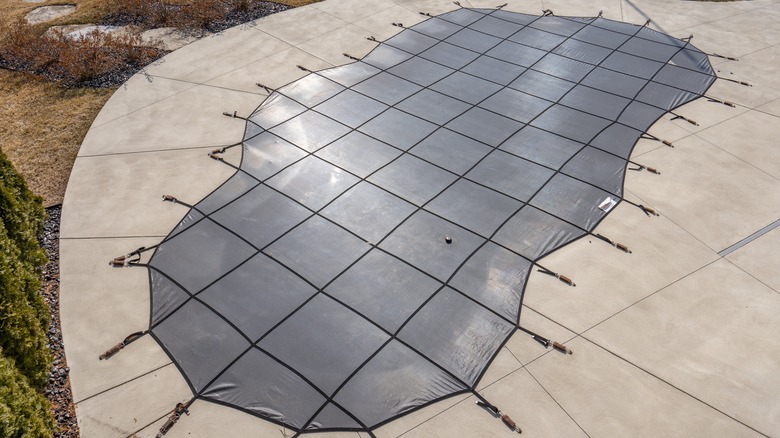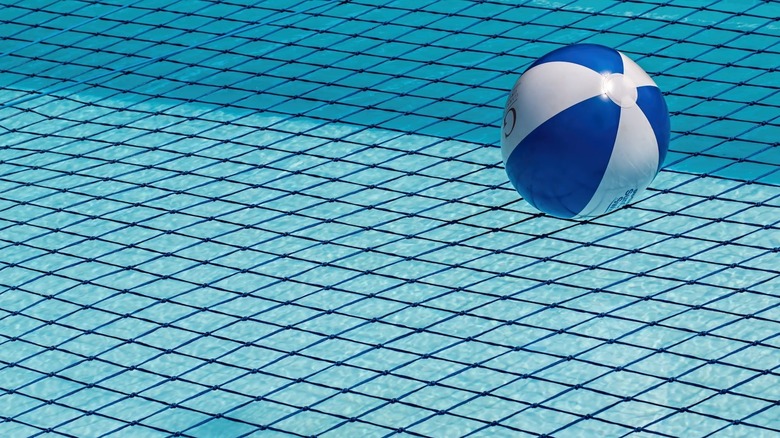Here's How Often You Should Replace Your Pool Cover
Pool covers may seem like a pain to maintain sometimes, but using these waterhole protectors is worth the hassle. To be sure they are giving you the maximum benefit level, you need to replace the pool cover occasionally. Depending on the material, thickness, storage habits, and degree of exposure to the elements, pool covers may need replacing anywhere from five years to a decade.
When pool covers begin to show wear and tear, they are unable to provide their typical full range of benefits. A properly functioning pool cover should maintain the water at a relatively consistent temperature, keep debris out of the pool, reduce maintenance frequency, and act as a safety net by preventing kids and pets from falling into the water. When the cover no longer performs these functions, it's time to replace it.
Furthermore, if you fail to store the pool cover properly between uses, it could attract rot or mold, creating more problems for your swimming hole — issues that the protective covering cannot solve. In a case like this, replacement is the best option. But because a new safety pool cover's average cost is $700 to $2,000, you want to be certain it's the right course to take before spending money on a new one. Use our tips to help you decide.
Expected lifespan of pool covers
In addition to the pool cover's materials and thickness, its weather conditions play a role in its lifespan. A pool cover under constant sunlight may become brittle, shortening its longevity. Automatic covers that roll up during the day will not have as much exposure to UV light, helping them last longer. Thicker covers will be more resistant to punctures from hail or falling branches than thinner ones.
Regarding materials, thick vinyl pool covers can last up to 10 years if they avoid excessive sun and pool chemical exposure. This material is highly durable, allowing it to survive harsh conditions. However, a thinner vinyl cover that's more like a tarp may only last one to three years, as it becomes brittle with frequent direct sunlight exposure. If this concerns you, look for a UV-resistant cover. Mesh pool covers that allow water to flow through but block larger debris from entering the pool rarely become brittle. Mesh has a reduced chance of tearing under excess weight, as it has more flexibility than the vinyl cover. A mesh cover could give you 10 years or more. However, it allows dust and small debris to reach the pool water.
Another way to estimate the lifespan of your pool cover is to look at the warranty period at the time of purchase. Real-world use can lead to far different results from warranty estimates.
How to inspect your pool cover for damage
Inspect your pool cover for damage every couple of months and each time you place it in storage. You should also examine the instrument whenever a damaging event occurs, such as if you had a storm where branches fell on top of the pool covering.
Start by inspecting a vinyl cover for small tears or holes — a patch will likely repair these. Having a cover with a few vinyl patches shouldn't affect the integrity of the material, although it may impact the aesthetics of the cover. However, if you have an option designed to support a child's weight, any puncture or tear could leave the waterhole protector unable to perform correctly. Check whether you can patch a small hole or tear in a vinyl safety cover with the manufacturer.
Next, feel the material. Vinyl and mesh pool covers should feel supple and a little stretchy. If the cover is starting to feel brittle or stiff, it is nearing its lifespan. You probably don't have to replace it immediately, but a brittle cover will increase the chance of tearing if placed under stress. At the same time, look for weak spots or stains you cannot remove, which may indicate a pool cover outliving its usefulness.


